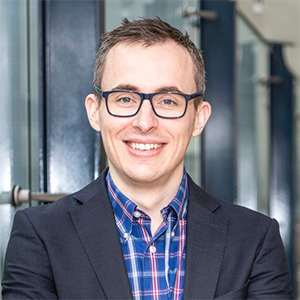CIO50 #13 Richard Taggart, Sydney Local Area Health District

Over the course of the last 20 months, Sydney Local Health District has played a leading role in the response to COVID-19 across Australia’s largest city and across all of New South Wales.
And as its chief information officer, Richard Taggart tells CIO Australia, he and his 170-strong tech team have been in the thick of it, with virtually every aspect of that response underpinned by some sort of digital innovation.
The stories he shares put one in mind of scenes from the TV series MASH, conjuring images of large numbers of people intensely choreographed in an urgent dance to stand up facilities with life and death implications.
“Working with our operational colleagues we helped set up apartment blocks across the city, kitted out as field hospitals to create the Special Health Accommodation,” he recalls. And certainly things ‘Hawkeye’ and ‘Honeycutt’ never had: digital patient journey boards, connected monitoring devices and electronic medical records.
These facilities have allowed the Sydney Local Health District care for and process tens of thousands of returned travellers and COVID-positive patients since they opened in March 2020. And with just under 1,000 people in their care at the time of writing, that’s up there with some of the largest hospitals in the country.
A month before the pandemic’s true scale was first apparent to most in March 2020, Taggart and his team supported the creation of rpavirtual, Australia’s first fully integrated virtual hospital service.
Boasting video conferencing technology, remote monitoring devices and a series of apps, it has helped care for people in quarantine and those with COVID-19 in the community. To date, some 30,000 people have benefitted from the service, which Taggart says is now being rapidly expanded to help keep more people out of hospital.
COVID Olympians
Developed in collaboration with NSW Health Pathology, Taggart and his team have enabled daily COVID surveillance testing for critical workers across the state.
Using a smart phone app and kiosks, a self-service COVID saliva swabbing system enables over 8,000 healthcare and border workers at 40 locations to be screened for COVID-19 every day. Screening history and results are available in the app to comply with public health orders, while automated reminders are sent out to book or update their vaccination status when using the system.
Naturally, Sydney LDH has been heavily involved in the NSW Health Vaccination program, operating a number of vaccination services including the Sydney Olympic Park Vaccination Centre.
“The vaccination program is supported by an end-to-end digital workflow with an online booking app, digital check in and queue management, closed loop medication management including identity verification and vaccine administration,” Taggart explains.
So far over 1.8 million people have booked an appointment and 900,000 vaccinations have been completed, making it the largest vaccination service in the country. Lauded for the digital experience delivered to customers, Taggart boasts that it has scored an average 96 percent ‘thumbs-up’ feedback rating. Ranking it amongst the best government services in NSW.
In addition to COVID-specific programs, Sydney LHD has experienced rapid digital transformation across the organisation, Taggart notes.
“We launched new digital protocols for our cancer patients, enabled electronic referrals for our outpatient services and are deploying new virtual care technologies including a state-of-the-art eICU.” And acceleration of cloud adoption over the past 12 months now places the agency amongst the biggest consumers of public cloud in the entire health sector.
Given the scale of Sydney LHD COVID response, it was clear from the beginning that the organisation would need to leverage technology in order to address the crisis.
Patients – and their families – being brought through Special Health Accommodation often presented with complex medical needs, requiring special care and attention. And of course the facilities housing them needed to operate with the strictest levels of infection controls to keep staff, patients and community safe from COVID transmission.
“The IT team have worked very closely with the clinicians and managers in these facilities to help address these challenges,” Taggart says. “Without access to video conferencing technology and electronic medical records, it would be very difficult - if not impossible - to provide this scale of service.
Brainstorming at scale
Given the number of locations and 24-hour nature of the NSW quarantine and border work, the daily saliva swabbing service would have required an enormous roster of staff to manage and process samples relying on traditional methods.
Taggart and his team get together to brainstorm and quickly prototyped solutions which were deployed in quick and today continue to iterate as circumstances dictate.
“The digital self-service app, kiosk and automation tools developed in collaboration with NSW Health Pathology have enabled the surveillance program to rapidly scale,” he says. “This has successfully helped protect staff and the community from COVID breaches.”
Meanwhile, through the NSW Vaccination Program, Sydney LHD is now offering over 21,000 vaccinations a day to eligible consumers.
“Without a comprehensive booking and vaccination management system it would not be possible for the organisation to hit this sort of scale,” Taggart tells CIO Australia.
“The IT team have been key collaborators and involved at every step of the program, working tirelessly to scale the infrastructure and security measures required to support the system and to continuously deploy new features to both consumers and clinicians.”
Even though he’s the head of technology for a large government health agency and a member of the executive team, Taggart never took it for granted that he would still need to muster his best management skills and powers of influence to have his senior peers see what he could see and bring them along on the journey.
“On a daily basis I speak with clinical and operational leaders about their business challenges and how they are using technology to address them,” he says.
“As we are a prominent research organisation, I am also privileged to lead and participate in several digital health research projects. This includes several COVID related research initiatives.”
David Binning